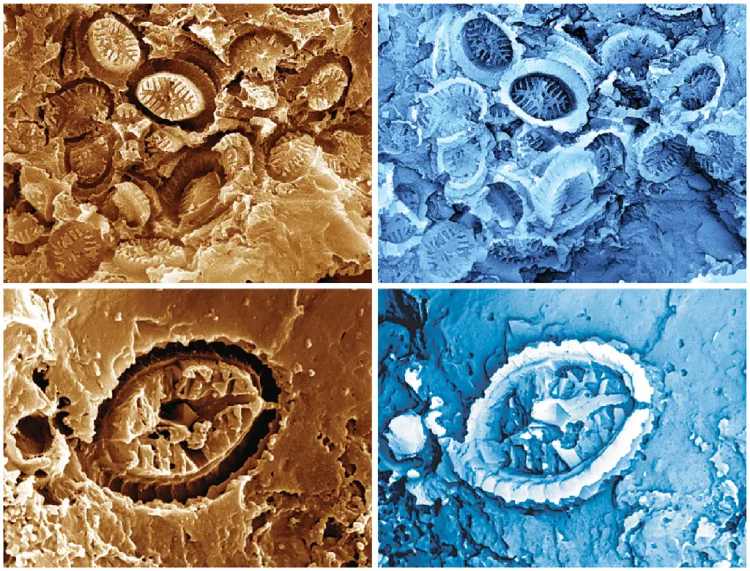Researchers discover ghost fossils underneath a microscope
Sun 22 May 2022
The surprising discovery of “ghost” fossils belonging to tiny, ancient organisms could provide insights into how life reacts to climate change in Earth’s oceans.
Looking through a powerful microscope, scientists were stunned to see the impressions left by single-celled plankton, or fossilized nannoplankton, that lived millions of years ago, especially since they were analyzing something else.
A study detailing the findings was published recently in the journal Science.
“The discovery of the ghost fossils was a complete surprise. We were actually studying fossil pollen from the same rocks. I had never seen this style of fossil preservation before, and the discovery was doubly surprising because the imprints were found in abundance from rocks where normal nannofossils are rare or missing entirely,” said study author Sam Slater, a researcher at the Swedish Museum of Natural History in Stockholm.
As the researchers examined the pollen under a scanning electron microscope, they spied “tiny potholes” on the surface of the pollen, Slater said. When they zoomed in to see the potholes using magnifications of thousands of times, they observed complex structures.
This microscopic plankton still exists today, and it supports marine food webs, provides oxygen and stores carbon within seafloor sediments. A coccolithophore surrounds its cell using a coccolith, or hard calcareous plate, which can fossilize in rocks.
Although tiny as individuals, coccolithophores can produce cloudlike blooms in the ocean that can be seen from space. And once they die, their exoskeletons drift down to rest on the seafloor. As they accumulate, the exoskeletons can turn into rocks like chalk.
The ghost fossils were created as seafloor sediment turned into rock. Layers of mud accumulating on the seafloor pressed the hard coccolith plates together with other organic matter, such as pollen and spores. As time passed, acidic water trapped within the rock spaces dissolved the coccoliths. All that was left was the impression in the stone they once made.
Source: Agencies

 Apr 26 2024
Apr 26 2024













